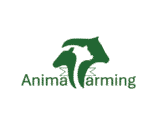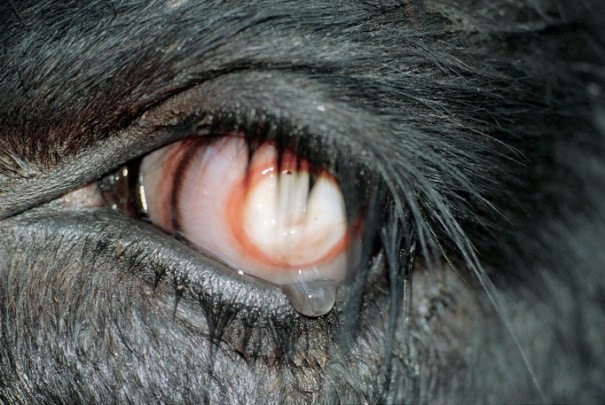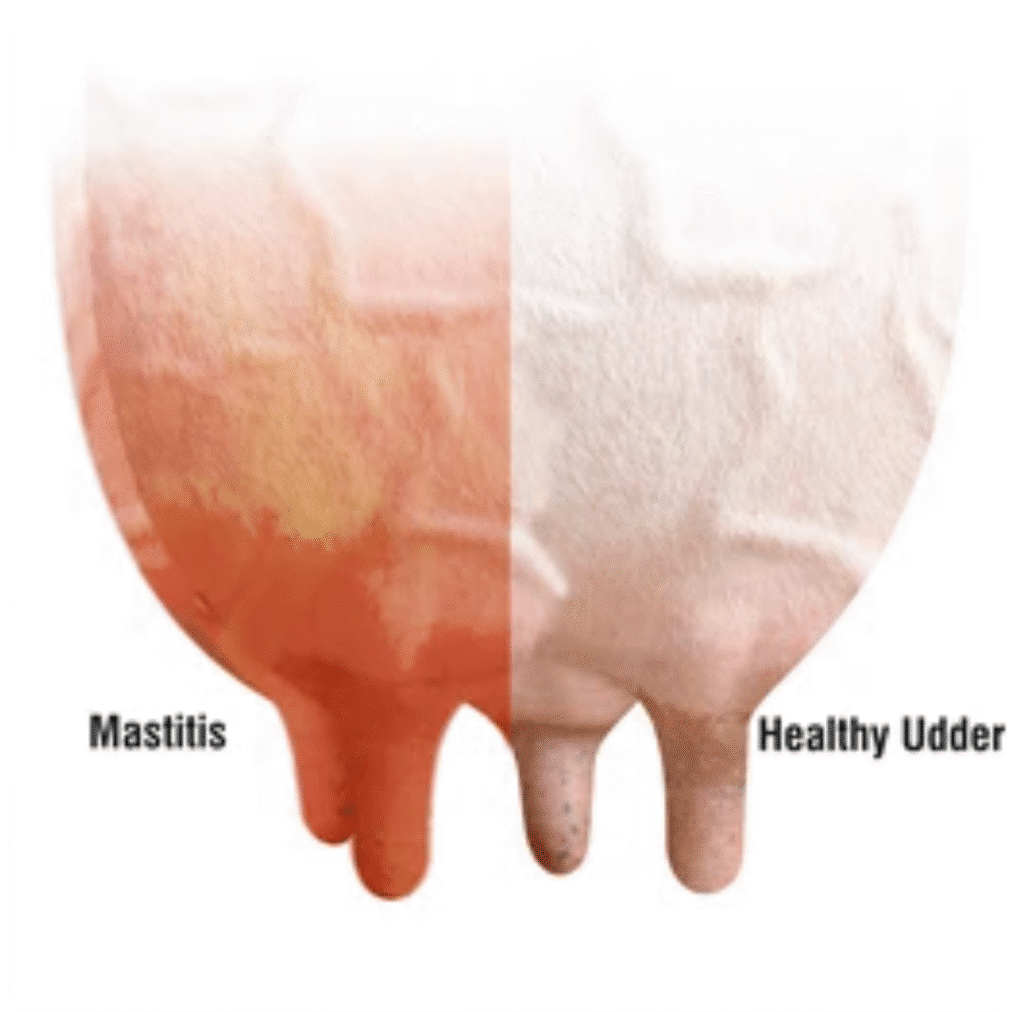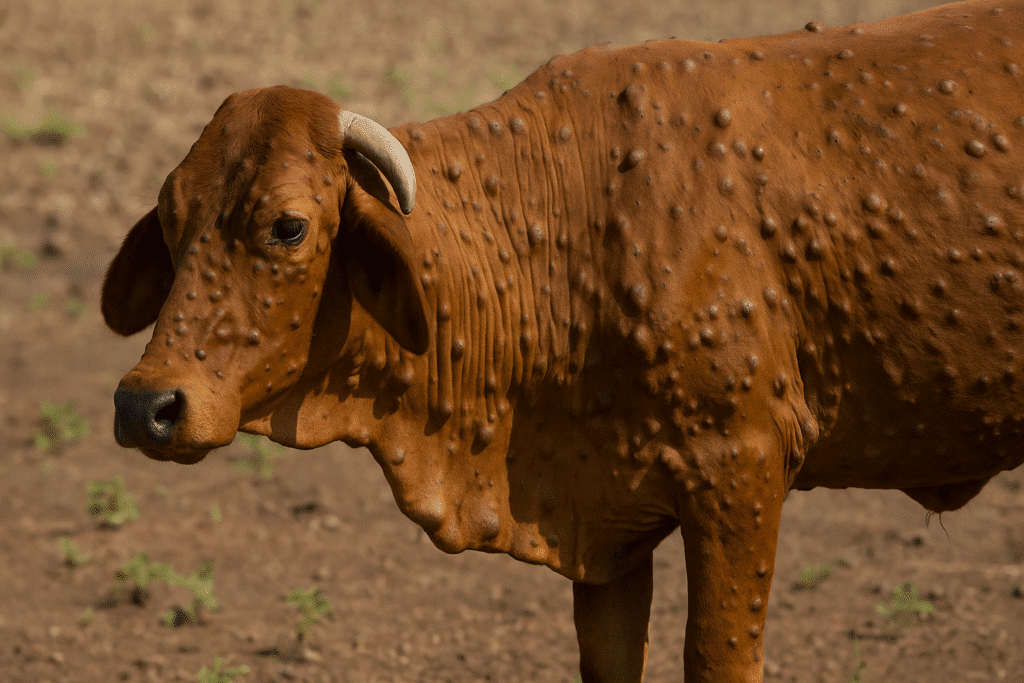Infectious Bovine Keratoconjunctivitis (IBK), also known as ‘Pink Eye in cattle’ or ‘New Forest Eye,’ is one of the most common cattle eye problems worldwide. It is an infection that mainly affects the clear part of the eye (cornea) and the inner eyelid (conjunctivitis).
Moraxella bovis (Bacteria) is the primary factor in Infectious Bovine Keratoconjunctivitis. Pink Eye disease in cattle worsens with factors such as flies, dust, wind, intense sunlight, tall grass, weakened immunity, and other infections. If cattle show symptoms such as red eyes, tearing, and pain, it could be a sign of pink eye disease.
Pink eye in cattle must be managed promptly with proper preventive measures and appropriate treatment guidance. Early attention is crucial, as delayed treatment may lead to more severe consequences for both the farmer and the cow.
Bovine pink eye disease in cattle is painful and carries a high risk of eyesight loss. If it worsens, it will impact the animal’s growth and productivity, and also result in significant economic losses for the farmer due to additional care, expensive treatment, and the potential for transmission to other animals.
Pink Eye in Cattle Symptoms
Pink eye disease (Infectious Bovine Keratoconjunctivitis) symptoms in cows include watery eyes, red eyes, frequent blinking, irritation, and avoidance of sunlight due to eye pain. Tears running down the face and swelling of the eyelids are also common. Many animals rub their faces against posts or the ground due to irritation, which is often linked to conjunctivitis in cows (an inflammation that causes the eyes to be sore and highly sensitive).
As the disease progresses, the signs become more serious. The clear eye turns cloudy or gray, and a small white spot usually appears in the center. This spot can develop into a corneal ulcer, and within 48-72 hours, the entire eye may appear bluish-white or hazy due to swelling. In some cases, pus collects inside the eye, making it appear yellowish or milky. Animals often eat less or struggle to graze properly because of the pain.
In severe cases, blood vessels begin to spread across the cornea in an attempt to repair the damage. If deep ulcers are left untreated, the eye can become very fragile and may even rupture, causing permanent blindness. Even when healing occurs, scars can persist and have a long-term impact on vision. Along with eye damage, cattle may lose weight, become weaker, and produce less milk due to pain and reduced feed intake.
Causes of Pink Eye in Cattle
Infectious bovine keratoconjunctivitis (IBK) is mainly caused by the bacterium Moraxella bovis. This organism is a Gram-negative, rod-shaped Bacteria from the family Moraxellaceae. It carries delicate hair-like structures called pili that help it stick firmly to the cornea of the eye.
Once attached to the cornea, the bacterium releases cytotoxins (MbxA cytotoxin) that damage the protective cells of the cornea and conjunctiva. This leads to eye irritation, redness, cloudiness, and, in severe cases, ulcer formation. Cases of pinkeye in calves are often more serious because young animals have weaker immunity.
Other organisms, such as Mycoplasma bovoculi, Branhamella ovis, and viruses like IBR (Infectious Bovine Rhinotracheitis), can weaken the immune system and exacerbate the disease. But Moraxella bovis remains the primary and most important cause of the disease.
Predisposing Factors for Pink Eye in Cattle
One of the biggest reasons pink eye spreads in cattle is the presence of face flies. These flies feed on moisture around the eyes and easily carry the bacteria from one cow to another, causing fast outbreaks in the herd.
Dust and wind are also significant problems because they dry and irritate the eyes, leaving small scratches on the surface where bacteria can settle and grow. Constant exposure to bright sunlight can add stress to the eyes, weakening their natural defenses and increasing the likelihood of infection.
Out in the pasture, tall grass, weeds, or rough hay can scratch a cow’s eye, allowing bacteria to enter. Conditions in housing also matter—dry air or strong ammonia can irritate the eyes and make cattle more susceptible to infection.
Calves and young animals are at higher risk because their immune systems are not fully developed, so they can’t fight off the disease as strongly as adults. Cattle with white or unpigmented skin around the eyes, like Herefords, are more sensitive to sunlight and often suffer more from pink eyes. Finally, when animals are kept in crowded housing, they are in close contact, which allows the bacteria to spread quickly from one cow to another.
Bovine Pink Eye Treatment
Treatment of pink eye in cattle focuses on reducing pain, clearing the infection, and protecting the eye. Antibiotics, such as oxytetracycline and florfenicol, kill the bacteria, while anti-inflammatory medications reduce swelling and irritation.
In severe cases, an eye patch or cover may be used to protect the eye and speed healing. Supportive care—such as providing shade, clean feed, and effective fly control—helps cattle recover faster and reduces the spread of the disease.
The first step in treating pink eye in cattle is to use appropriate antibiotics to control the infection. In mild to moderate cases, topical options such as oxytetracycline or Terramycin can be applied directly to the eye every 8–12 hours.
For more severe infections, injectable antibiotics are recommended. Long-acting oxytetracycline or tulathromycin is commonly used, as it provides stronger and longer-lasting control. In some cases, penicillin can be injected directly under the conjunctiva to combat the bacteria more effectively.
For advanced cases with deep corneal ulcers, veterinary procedures such as a third eyelid flap or temporary eyelid sutures can help protect the eye and promote healing. In controlled or hospital environments, autologous serum eye drops may be added to further support corneal repair. While some farmers use natural remedies as supportive measures, these should only be considered alongside antibiotics and never as a replacement for them.
Pain Management and Inflammation
Antibiotics are primarily used to kill the invading bacteria, and in conjunction with them, anti-inflammatory drugs are administered to reduce swelling and discomfort.
After starting antibiotics, controlling pain and inflammation becomes essential for faster recovery. Non-steroidal anti-inflammatory drugs (NSAIDs), such as flunixin meglumine, ease discomfort and improve cattle’s well-being.
In cases of severe eye inflammation, 1% atropine ointment can be applied to relieve painful eye spasms. However, treated animals should be kept in the shade, as their pupils dilate.
Protect the Eye
Protecting the affected eye supports recovery and prevents further irritation. 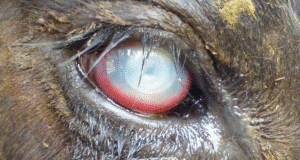
Daily monitoring is essential. Check for reduced redness, decreased discharge, and healing ulcers. Most cases improve within 7 to 14 days. If the eye gets worse, shows no improvement, or if several animals don’t respond to treatment, consult a veterinarian to check for other infections or possible antibiotic resistance. Following proper antibiotic treatment, eye protection, and supportive care ensures the best cure for pink eye in cattle and minimizes the risk of permanent eye damage or blindness.
Prevention and Management of Pinkeye in Cattle
Pink eye is a transmissible disease. It requires a combination of measures that protect the eyes from infection and reduce the spread within the herd. Effective prevention of pink eye disease in cows is based on controlling flies, managing pastures and dust, administering timely vaccinations, providing proper nutrition, and maintaining good herd practices.
Prevention through Fly Control
Face flies are the biggest culprits in spreading pinkeye because they feed on eye and nose secretions, carrying bacteria from one animal to another. To keep them under control, use insecticide ear tags, pour-on treatments, sprays, or back rubbers during fly season.
Clean up manure and wet areas regularly, since flies lay eggs in fresh dung. Providing shade reduces irritation from sunlight and prevents cattle from bunching together, which otherwise attracts more flies to their faces.
Pasture and Environmental Management
Proper pasture and environmental management play a vital role in preventing pinkeye by reducing eye irritation. Tall grasses, weeds, and seed heads can scratch the eye, so regular mowing and weed control are essential.
Dust in dry conditions further weakens natural defenses, making cattle more vulnerable. This can be managed by sprinkling water, rotating pastures, and avoiding overstocking in dry pens.
Providing shade through trees, shelters, or shade cloth not only protects eyes from harsh sunlight but also reduces fly pressure and stress, while windbreaks help control both dust and UV exposure. Together, these measures create a healthier environment that reduces the risk of pinkeye outbreaks.
Vaccination as a Preventive Tool
Vaccination helps reduce pinkeye outbreaks, but timing matters. Cattle should be vaccinated 3–6 weeks before fly season. Calves should be included, and booster shots should be administered as directed on the label or by a veterinarian.
Most commercial vaccines protect against Moraxella bovis, and some also cover M. bovoculi for wider protection. Vaccines may not completely prevent pinkeye, but they usually reduce its severity, help cattle heal more quickly, and slow down its spread.
In herds where commercial options are less effective, veterinarians may recommend autogenous vaccines, which are custom-made from bacteria on the farm, often delivering stronger results. For best results, vaccination, fly control, pasture management, and good nutrition ensure maximum protection and healthier herds.
Role of Nutrition
Nutrition has a direct influence on how well cattle can resist pinkeye and recover if infected. A strong immune system depends on adequate intake of vitamins and trace minerals, which protect the eye’s surface and help the body fight bacteria.
- Vitamin A is essential for maintaining healthy eye tissues and mucous membranes. Deficiencies can cause the eyes to become dry and more susceptible to injury or infection. Feeding high-quality green forage or supplementing with vitamin A during dry seasons supports strong eye health.
- Zinc plays a role in wound healing and tissue repair. It helps minor scratches on the eye surface heal quickly before bacteria can invade.
- Copper is vital for immune function and helps maintain the strength of connective tissues, reducing susceptibility to irritation.
- Selenium, often paired with vitamin E, enhances overall immunity and reduces oxidative stress, thereby improving resistance to infections such as pinkeye.
Providing free-choice mineral supplements or fortified rations Guarantees that cattle consistently receive these nutrients, especially in regions where soils and forage are naturally deficient. Salt-mineral blocks alone may not meet these needs, so loose mineral mixes are often more effective.
During hot weather, heavy fly pressure, or weaning, cattle need stronger nutrition. A balanced feed, regular minerals, and clean water help reduce stress, boost immunity, and lower the risk of pinkeye.
Biosecurity and Herd Management
Good biosecurity measures are crucial in preventing pinkeye from entering the herd. Newly arrived heifers should be quarantined for at least two weeks, giving time for health checks, deworming, vaccination, and parasite treatment before mixing them with other cattle.
Isolate animals with early signs—like watery eyes or squinting—in a sick pen to reduce flies and limit contact. Keep equipment clean by disinfecting halters, nose tongs, dehorners, and gloves after each use, or use separate sets for animals that are sick.
Managing stocking density, ventilation, and handling practices also lowers stress and fly pressure, making outbreaks less likely. Regular vaccination, parasite control, and proper nutrition keep the herd healthy, strengthen immunity, and help cattle resist infections.
Conclusion
Infectious Bovine Keratoconjunctivitis, or pink eye in cattle, is a painful and highly contagious disease that affects both animal welfare and farm productivity. It is mainly caused by Moraxella bovis but worsened by flies, dust, sunlight, tall grass, and weak immunity. Catching the disease early and treating it with antibiotics, pain relief, and eye protection is key to preventing permanent damage or even blindness.
However, the best results come from prevention through strict fly control, good pasture management, timely use of a pink eye vaccine for cattle, balanced nutrition, and strong herd biosecurity. By using these strategies together, farmers can protect their herds, cut down losses, and keep their cattle healthier and more productive.
FAQs related to Pink eye in cattle
How do you treat pinkeye in cattle?
Antibiotics like, Tetracycline and Tulathromycin (Draxxin) are used to treat Pink eye disease in cattle. Sick animals should be isolated, and good fly control is needed to prevent them from spreading.
Will pink eye go away on its own?
Yes, viral and allergic pink eye typically resolve on their own usually within a week or two. Although symptoms may occasionally return.
What causes pink eye in cattle?
Pinkeye is mainly caused by the bacteria Moraxella bovis, often spread by flies, dust, tall grass, sunlight, and poor nutrition can also irritate the eyes and make cattle more vulnerable.
What is the best vaccine for pink eye in cattle?
There isn’t one best vaccine for pink eye in cattle. It depends on what bacteria cause it. Common vaccines include Bovilis Piliguard Pinkeye, Ocu-guard MB-1, and Moraxella bovoculi Bacterin. The best choice depends on your herd, so it’s important to ask a veterinarian for advice.
How to prevent pink eye in cattle?
Prevention starts with controlling flies and keeping pastures and housing clean. Reduce eye irritants like dust, tall grass, and rough hay, and provide good nutrition, vaccination, shade, and clean water to keep cattle healthy and lower the risk of pinkeye.
How long does pinkeye last in cattle?
Pinkeye in cattle usually lasts 2 to 3 weeks if treated early, but severe cases can take longer to heal. Quick treatment helps reduce complications, prevent scarring, and limit the spread to other animals.
Does pink eye affect cattle’s weight gain?
Yes, pinkeye can reduce weight gain because affected cattle eat less due to pain and discomfort. It can also make them weaker and lower milk production in lactating animals.
